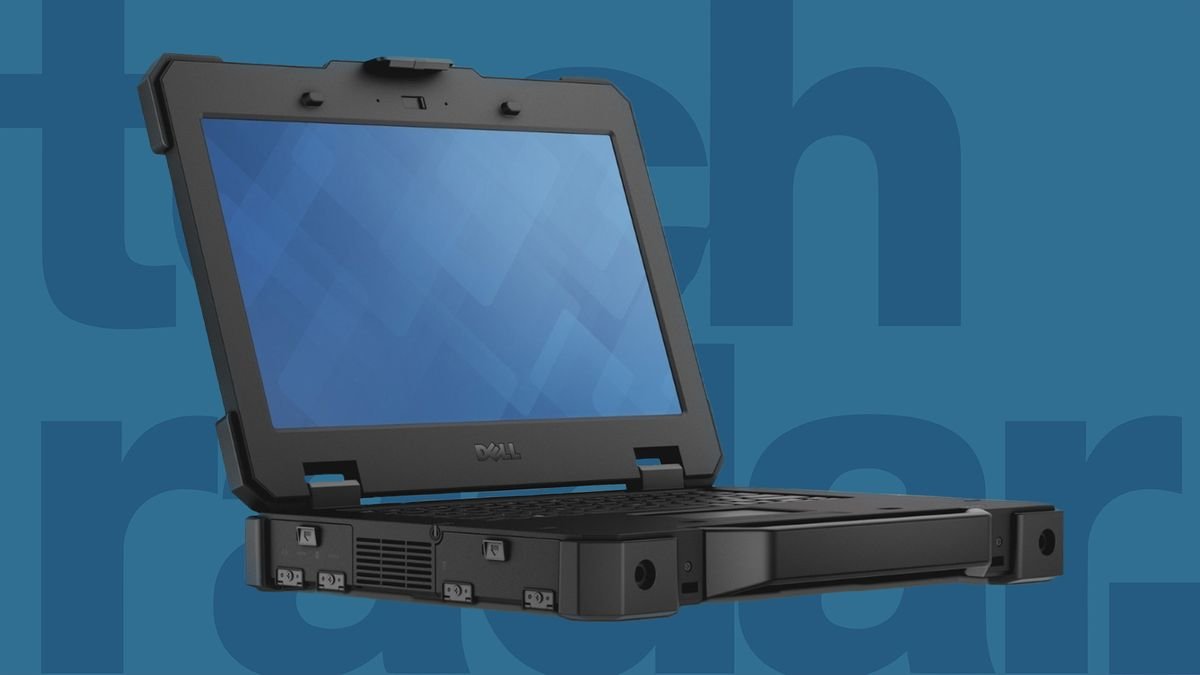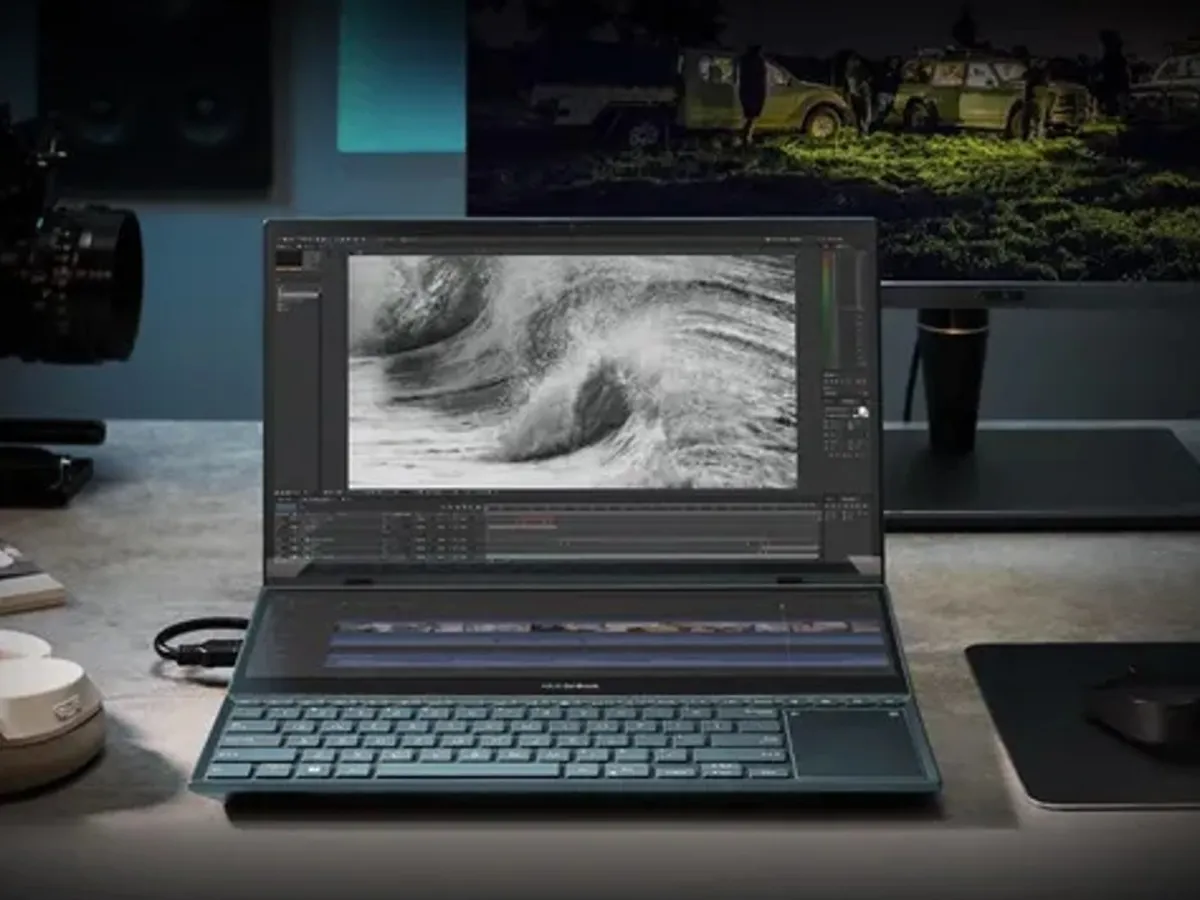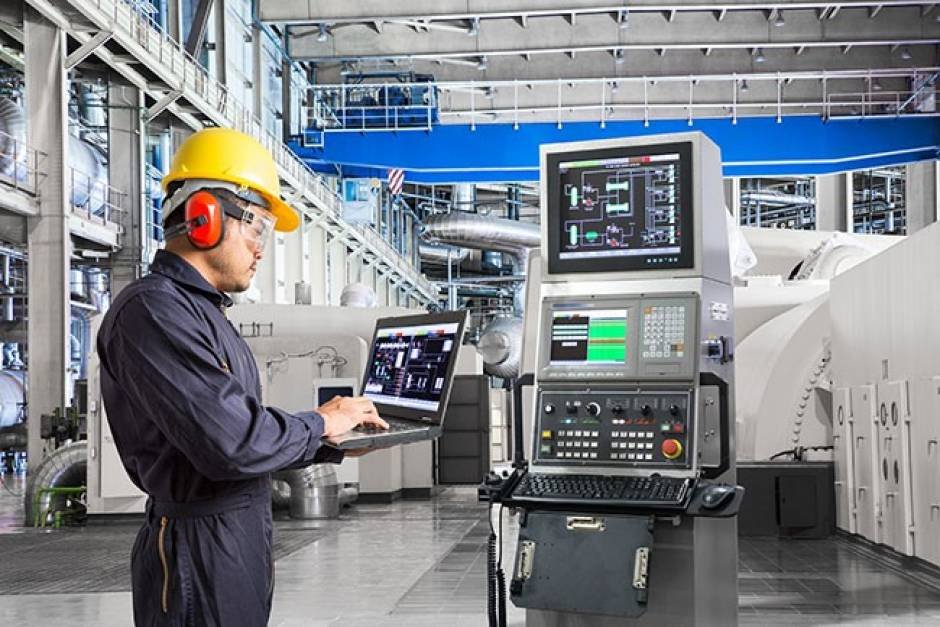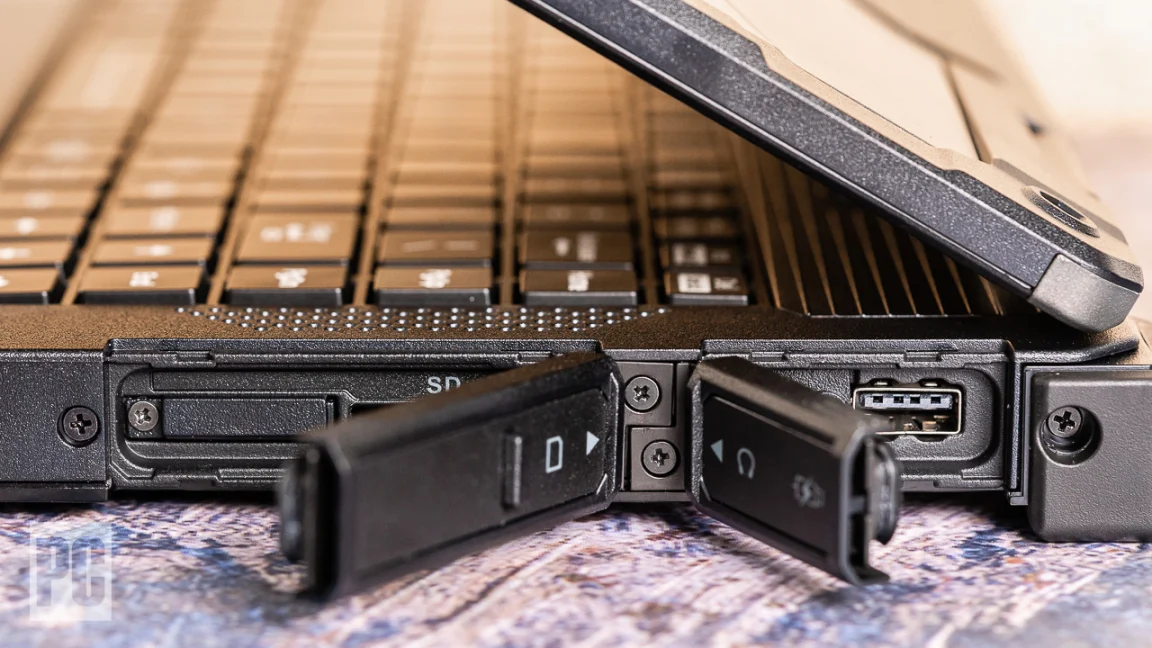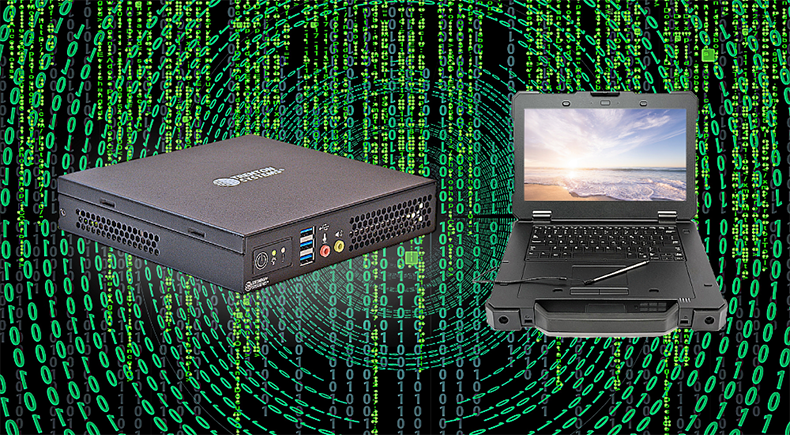When it comes to enterprise computing in harsh environments, a Rugged computer is transforming the industrial sector like never before. With the rise of edge computing and major benefits from 5G networks, rugged computers have key advantages that can provide new benefits in operational efficiency and productivity for industrial computing applications.
Edge computing helps to alleviate processing workloads at the cloud by gathering and processing information right at the edge (where the applications are deployed) before sending only crucial information to the cloud. Especially with 5G networks coming online, an array of devices and sensors will benefit from low-latency processing with incredible bandwidth speeds. With these new benefits in wireless connectivity, new edge computing applications are being pushed to newer places, oftentimes in the harsh and unstable environments detrimental to regular computers. This is where a purpose-built rugged computer comes into place.
What Is A Rugged Computer?
A rugged computer is a specialized computer that is configured with high-end specifications to run complex tasks at the edge while being able to maintain its durability, reliability, and long-term longevity. Deployments at the edge often involve extreme environmental challenges such as wide temperatures, extreme shock, constant vibration, dust ingress, water exposure, and much more.
Regular desktop computers will quickly fail when exposed to any of these extreme environments, whereas rugged computers are built to withstand the rigors of environmental challenges. This is why specific applications that manage data workloads utilize rugged computers instead of regular desktop computers for edge computing applications in remote or mobile settings
Where Do You Use A Rugged Computer?
Thanks to the high-end specifications that rugged computers have, rugged computers are utilized in various industrial applications that require robust and high-quality computers that ensure stable 24/7 operation. Everything from the external architecture to the internal components, rugged computers are designed and built for continuous exposure to extreme industrial environments. That said, rugged computers are not only tough but also capable of performing various applications from self-service kiosks to autonomous vehicles.
Rugged Computer Vs Desktop Computer
In some cases, there are few similar things that both rugged computers and standard desktop computers share such as similar computer components from processors, memory, storage, and GPU. However, the build materials and technical design principles are completely different. Standard desktop computers are suitable for controlled indoor spaces, where rugged computers, in contrast, are built to withstand extreme environmental challenges for 24/7 operation.
For instance, some of the main differences between rugged computers and standard desktop computers are its chassis enclosure, motherboard, internal components, cooling design, I/O support, and much more. In this blog post, you will understand how rugged computers are tailored for industrial applications and why standard desktop computers are not suitable for enterprise deployments in extreme environments.
Why A Rugged Computer Is Beneficial?
Rugged computers help to ensure your industrial applications continue to run smoothly even in the toughest condition. Since the design framework for rugged computers is much different from standard desktop computers, a rugged computer is often selected for mission-critical applications that need to eliminate any risk of downtime. These computing platforms are designed in a way to eliminate any downtime and maintain long-term reliability.
Even though some desktop computers can be much more affordable compared to rugged computers, the total cost of ownership holds more value for rugged computers in enterprise applications due to its proven reliability. Rugged computers are tested to operate and endure the harshest environments by leveraging unique mechanical and thermal engineering techniques that can outperform desktop computers.
Different Types Of Rugged Computers
There are multiple types of rugged computers that can be configured based on your needs. Some common types of rugged computers include mini rugged computers, fanless rugged edge computers, AI rugged edge computers, in-vehicle & transportation rugged computers, and fully waterproof rugged computers.
First, the mini rugged computer is a palm-sized rugged computer that is specifically designed for space-constraint industrial applications.
LEARN MORE About Rugged Mini Computers
Second, a fanless rugged edge computer is a system that is utilized as a gateway system at the edge. It’s configured with various I/Os that are capable of managing various connected devices.
Third, an AI rugged edge computer is a robust computer that is configured with a powerful GPU (graphics processing unit) and ultra-fast NVMe SSDs that are tailored to execute complex AI algorithms at the edge.
LEARN MORE About Industrial PC with NVIDIA GPU
Fourth, an in-vehicle & transportation rugged computer is a rugged computer that is configured with power ignition management and is certification ready for safe and reliable deployments around in-vehicle and transportation applications.
Last, a fully waterproof rugged computer is an IP (ingress protection) rated computer that can withstand extreme exposure or tiny dust debris and water particles. The waterproof computer has multiple ratings for ingress protection from IP65 up to the highest IP69K rating that eliminates dust, debris, and even water intrusion.
LEARN MORE About Waterproof Rugged Computers
What Makes A Rugged Computer Tough And Durable? (8 Key Features)
The strongest rugged computer is a rugged computer that can fully operate 24/7 in extreme environments while maintaining its performance, durability, reliability, and longevity. A well-designed rugged computer is tested and validated to ensure its ability to withstand extreme environments that include extreme cold or heat, shocks, vibrations, dust particles, water ingress, high voltage fluctuation, and more.
LEARN MORE About What Makes Up a Rugged Industrial PC
Rugged computers are capable to withstand extreme environments because they are engineered and designed with the latest techniques in thermal dynamics, material science, and precision engineering. Here are some of the common features in a rugged computer that makes it durable and tough:
1. Wide Temperature Range
One of the crucial characteristics of a rugged computer is to have a wide operating temperature range to withstand extremely hot and cold environments. Many industrial devices are deployed in environments where standard desktop computers will fail when exposed to extreme temperatures.
For instance, outdoor settings can quickly reach up to 60℃, creating a scenario for electronics to overheat and fail. These high heat use cases can easily overheat standard desktop computers causing critical components like the CPU to throttle its performance or even worse, fail. A freezing cold environment can also be a problem for standard desktop computers to operate successfully. Freezing cold industrial environments can reach as low as-40℃ and can quickly cause downtime due to the computer’s inability to operate properly.
That said, rugged computers are designed with thermal engineering techniques to ensure wide temperature support ranging from -40℃ up to 85℃ for optimal performance in these extremely hot and low temperatures.
2. Shock And Vibration Resistance
Another essential characteristic of a rugged computer is its ability to endure shock and vibration resistance. Some industrial applications often involve constant shock and vibration which, is also one of the main factors standard desktop computers are not suitable for these settings. When shock and vibration are present in specific applications, it can be highly detrimental for computers that have not been tested for these environmental challenges. Therefore, a purpose-built rugged computer is specifically designed to meet these challenges through its unique mechanical design. Everything from the use of cables, excess screws are eliminated to ensure the reduction of common failure points. Moreover, rugged computers also use solid-state storage drives (SSDs in order to remove the use of physical spinning disks which, can be corrupted in kinetic settings due to constant movement.
LEARN MORE About Vibration Resistance Embedded Computer
When it comes to specific designs to endure shock and vibration, there are several key designs to ensure reliable resistance. A rugged computer will feature the use of a fanless design, cable-less design, one-piece chassis, industrial-grade materials, and the use of SSD instead of HDD for a secondary storage solution. Furthermore, well-designed rugged computers also adhere to military standard MIL-STD-810G for shock and vibration resistance. For these reasons, rugged computers are great for transportation solutions that include in-vehicle, autonomous vehicles, ADAS, and railway systems.
3. Ingress Protection
ingress-protection-IP-rated-rugged-computers-IP69K-IP65
Industrial computing applications oftentimes also require resistance to s dust and water, also known as ingress protection. From outdoor rain, marine applications, to extreme washdowns for hygienic sanitizations, rugged computers are also designed in a way to protect themselves from damaging dust, debris, and water intrusion. Fully waterproof rugged computers are configured with M12 I/O connections. M12 connection is known for its durability and reliability against extreme water and dust exposure because of its locking feature. M12 connectors and waterproof rugged computers have different levels of IP rating ranging from IP65 to even IP69K for submersible computing.
Thanks to the one-piece chassis and fanless design, rugged computers can reach a robust level of ingress protection rating. Briefly explained, IP rating has two digits, the first digit represents protection level from dust and the second digit represents protection against water exposure. The number 6 is the highest rating for dust protection which means the system is fully dust-tight and 9K is the highest rating for water exposure which means the system is fully protected against close-range, high-pressure, high-heat water jets.
4. Power Protection
Power protection is another feature that ensures the reliability and durability of a rugged computer. Thanks to the power protection feature, rugged computers can be deployed in environments that have power fluctuations. Some industrial deployments such as remote location applications or embedded systems can have high power fluctuations that can jeopardize the internal components of the computers.
Rugged computers are equipped with over-voltage protection (OVP), over-current protection (OCP), and a wide range of input capabilities to protect themselves from detrimental power fluctuations in unstable settings. OVP protects the system by automatically cutting off power input that is over 50 volts to avoid internal damage; And a wide range of input support various input voltages from 9 volts up to 48 volts of input to adapt with diverse configurations for different industrial power input environments.
5. Fanless Design
A Rugged computer cooling system utilizes a fanless design that implements passive cooling architecture to dissipate heat from the internal components. A fanless design carries huge benefits including lower MTBF (mean time between failure), lower power consumption, a low acoustic and silent system, shock & vibration resistance, dustproof, waterproof, and much more. Passive cooling utilizes ultra-conductive heatsinks that are made out of aluminum and copper heat pipes for efficient heat dissipations.
These heatsinks then transfer the heat from the hottest part of the components such as CPU, PCH (platform controller hub), and other processors to the external enclosure, dissipating the heat to the external environments. With a passive cooling design, a rugged computer can even leverage a powerful 65-watt CPU without any need for a fan in extended temperature ranges.
6. One-Piece Chassis
The One-Piece chassis is protecting the internal system while working as a giant heatsink for the rugged computer. The entire enclosure of a rugged computer is made out of heavy-duty metal that is molded into a one-piece design. Its one-piece designs help to eliminate fewer joints in the system design, providing better resistance to intense shock and vibration in the system. With fewer joint parts, gaps, and screws, the sealed enclosure can increase the IP rating level and its overall reliability.
7. Storage Solution: SSD Vs HDD
Rugged computers are configured with solid-state drives or SSDs for their secondary storage solution. Using SSDs instead of traditional HDDs (hard disk drives) as secondary storage provides various benefits for rugged computers. Rugged computers do not use traditional HDDs to avoid damaging and corrupting data due to sudden movements Traditional HDDs use a high-rpm spinning platter which is a metallic disk that spins rapidly up to 15K rpm; the data is accessed through an actuator arm to read/write data onto the disk.
On the other hand, SSDs utilize NAND flash technology to read/write data without any moving parts, making SSDs eliminate s extremely durable and reliable for mission-critical industrial applications. SSDs also are extremely fast and compact, making them the clear choice for storage solutions when it comes to selecting storage options for rugged computers.
8. Industrial Grade Materials And Components
One of the elements that enable rugged computers to perform with better reliability and longevity is their industrial-grade materials. Every part of a rugged computer is made out of industrial-grade material for optimum durability, reliability, and longevity. The internal components from PCBs, power chokes, transistors, resistors, I/Os, and added components are carefully selected to meet industrial grade standards. Industrial-grade materials are the key to industrial-grade performances that ensure uptime and avoid downtime.
What Makes The Best Rugged Computer?
With so many rugged computers on the market today, it is often difficult to distinguish the key features that make them truly durable and reliable. Here are some of the best features to review for rugged computers:
1. High-End Specifications
The best rugged computers are configured with high-end specifications to ensure they can smoothly run multiple complex tasks at the edge. These high-end specifications include the latest technologies in compute, memory, storage, and connectivity that includes: x86 CPU processors, NVME SSDs, DDR4 RAM, powerful GPUs, and 5G network modules.
These powerful performance accelerators enable rugged computers to execute complex applications in real-time such as AI edge inferencing, predictive maintenance, fleet management, autonomous vehicle, and much more. Moreover, rugged computers are equipped with TPM 2.0 (Trusted Platform Module) that enables the cybersecurity protection of data and information from online and offline threats amid deployments in a variety of locations.
2. Rich I/Os And Wireless Connectivity
Rugged computers also are equipped with rich I/Os for diverse configurations that support legacy technologies that are still found in many industrial applications. Additionally, the best rugged computers have modular I/Os options to support your specific requirements. There is a wide range of ports that you can personally tailor to best fit your application needs such as serial ports, USB, PoE LAN, Video ports, DIO/GPIO, M12 ports, CANbus, and much more. Furthermore, the best rugged computers also support diverse ultra-fast wireless options such as 5G/4G LTE network, WiFi 6, and Bluetooth 5.0 to ensure your devices stay connected even at the most remote location.
3. Certification Ready
Finally, the best rugged computers are certification-ready for various applications so that you can have a quick time to market. Rugged computers are carefully tested and validated in a reliable testing facility to ensure their reliability, durability, and longevity amid deployments in extreme environments. Rugged computers are certified with CE and FCC for EMC (electromagnetic compliance) conformity. The CE and FCC certificates ensure the device is approved and safe to deploy in the United States and European markets. al. Moreover, apart from CE, FCC, and EMC conformity, rugged computers can also come with transportation systems certifications including E-mark, EN50155, and EN50121-3-2 for in-vehicle and railway compliance.

